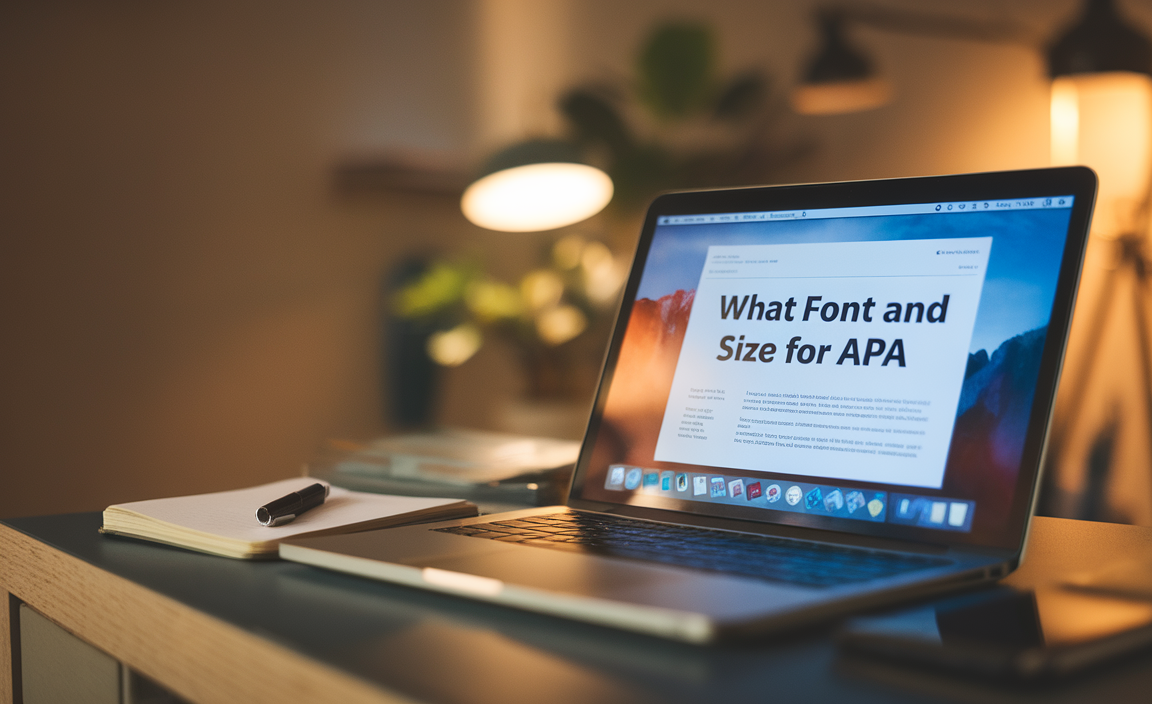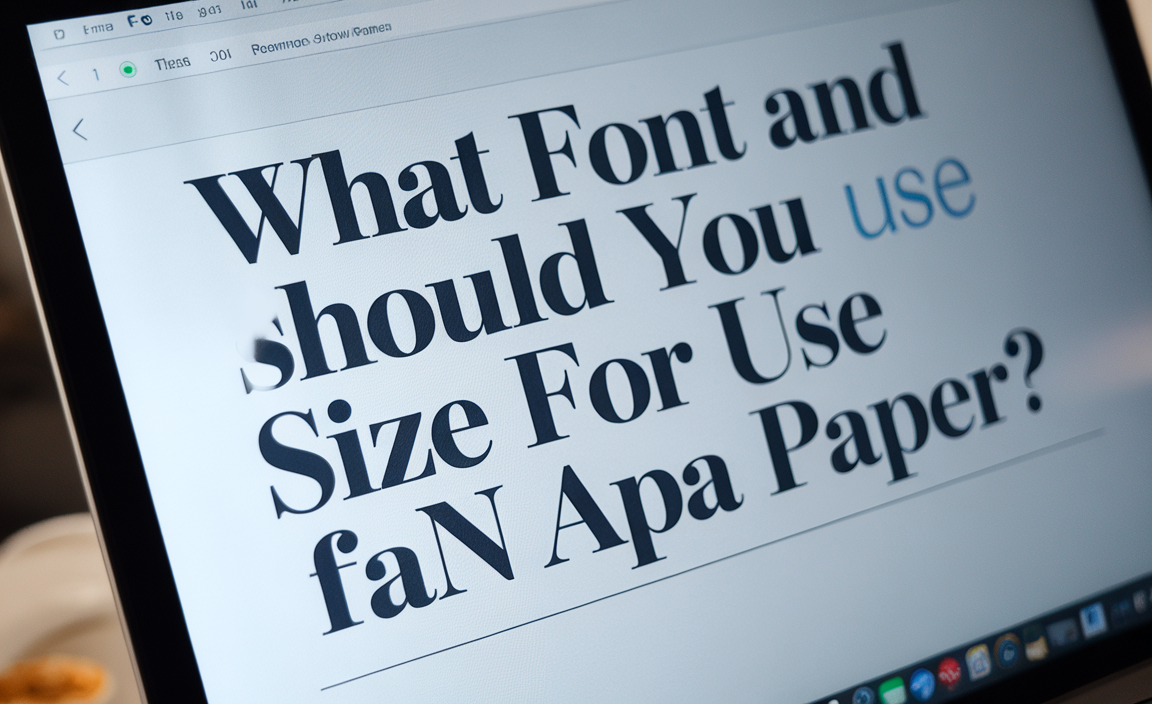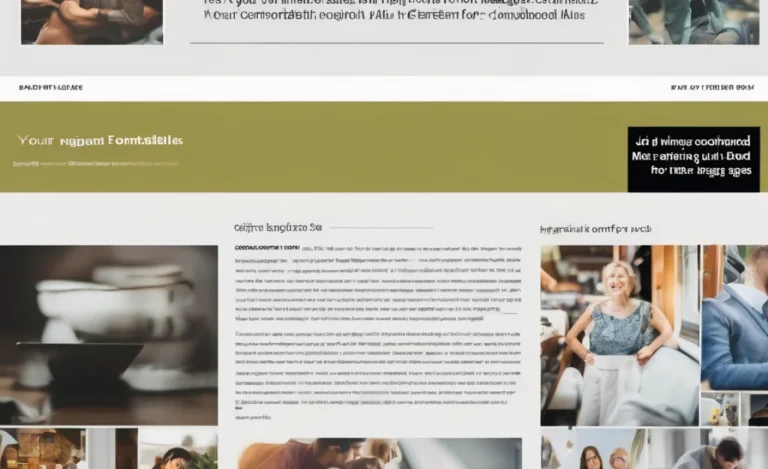When preparing a paper in APA (American Psychological Association) format, understanding the correct font and size is essential to meeting academic standards.
Whether you are writing a student paper, research paper, or professional paper, adhering to APA guidelines for font type and size will ensure your work presentation in a clear and professional manner. Let’s walk you through the font requirements for APA style papers and how to format them properly, with additional tips for citations, the references page, and more.

What Font and Size Should You Use for an APA Paper?

In the APA 7th edition, there are specific guidelines regarding the font type and size for your paper. These rules help to standardize the presentation of your work, making it more legible and consistent across academic disciplines.
-
Recommended Fonts:
The primary font for APA papers should be a serif font that is easily readable. The most common choices are:
-
-
- Times New Roman (12-point size)
- 11-point Arial (a sans serif font)
- 11-point Calibri (another sans serif option)
- 10-point Lucida Sans Unicode
-
APA formatting also allows for monospace fonts such as 10-point Computer Modern for specific uses, such as when citing computer code.
-
Font Size:
- The standard font size for most of your paper should be 12-point, except for certain circumstances such as the use of monospace fonts.
- 11-point fonts like Arial and Calibri are acceptable as alternatives, as they are still readable and professional.
- For appendices (such as Appendix A and Appendix B) or other specialized sections, the font size may vary slightly based on your instructor’s preferences. Always check with your professor or institution for specific requirements.
-
Formatting in Microsoft Word and Google Docs:
- Both Microsoft Word and Google Docs offer easy access to the standard fonts required for APA. Typically set as default fonts in your word processor. You can change the font style and size in the font settings of both platforms.
- Ensure that the font type and size are consistent throughout the entire paper, from the title page to the references page.
Other Formatting Considerations for APA Style Papers
-
Page Numbers:
- Every page in your APA style paper, including the title page and references page, should be numbered consecutively. The page number is placed in the upper right-hand corner of each page, half an inch from the top of the page.
-
Line Spacing:
- APA requires double-spacing for all text in the body of the paper, including the title page, abstract, headings, and reference list. This includes all quotations, notes, and other content.
- The only exceptions to this rule are for footnotes (where you can use single spacing) and tables or figures (depending on the content).
-
References Page:
- The reference list at the end of your paper should also be double-spaced, with each entry having a hanging indent. This is a common formatting style where the second and subsequent lines of each citation are indented.
- Each reference entry should include the author’s last name, first initial, year of publication, title of the source, and publication details, formatted according to APA citation rules.
-
Citation Style:
- In-text citations in APA format typically follow the author-date style. This means that whenever you paraphrase or quote someone’s work, you should provide the author’s last name and the year of publication in parentheses. For example:
- Paraphrase: (Smith, 2020)
- Direct quote: (Smith, 2020, p. 25)
- In-text citations in APA format typically follow the author-date style. This means that whenever you paraphrase or quote someone’s work, you should provide the author’s last name and the year of publication in parentheses. For example:
-
Headings:
- APA uses a five-level heading system to organize your paper. The heading level depends on the level of subordination in your paper’s structure.
- Level 1: Centered, Bold, Title Case
- Level 2: Left-aligned, Bold, Title Case
- Level 3: Left-aligned, Bold Italic, Title Case, etc.
- APA uses a five-level heading system to organize your paper. The heading level depends on the level of subordination in your paper’s structure.
-
Sample Paper and Annotated Bibliography:
- The APA style guide provides samples of different types of papers. Student papers may include sections such as an annotated bibliography, which provides a summary and evaluation of sources.
- Professional papers may have slightly different formatting rules, particularly in regard to title pages and headers.
-
Additional Resources:
- The APA Publication Manual is the official guide for APA style, providing all the specifics on formatting and citation rules. It’s a valuable resource for students and researchers alike.
- Purdue OWL is a helpful online resource that offers clear examples of formatting, citations, and references in APA style.
Conclusion
APA formatting may seem like a challenge at first, but once you understand the rules for font selection, font size, citations, and page layout, it becomes much easier to follow. Whether you’re writing a research paper, student paper, or professional paper, using the correct font and APA style ensures your paper is clear, readable, and properly formatted.
Frequently Asked Questions
What is the default font for APA style?
The default font for APA is 12-point Times New Roman. However, alternatives such as 11-point Arial or 11-point Calibri are also acceptable.
Can I use a different font for my APA paper?
It’s best to use one of the recommended fonts for consistency and readability. Avoid decorative or script fonts like Comic Sans or Brush fonts, which are hard to read in academic writing.
Do I need to use 12-point font for the entire paper?
Yes, APA recommends using 12-point font throughout your paper, except for specific sections like computer code, where monospace fonts may be used.
What font should I use for the References page?
The References page should follow the same font rules as the rest of the paper. Use 12-point Times New Roman or other acceptable fonts (e.g., Arial or Calibri).
How should I format page numbers in APA?
Page numbers should be placed in the upper right-hand corner of every page, starting with the title page. They should be half an inch from the top of the page.
Should I include page numbers on the title and reference page in an APA format paper?
Yes, page numbers should be included on both the title page and the reference page in APA format. All pages of the paper, including the title and reference pages, should be numbered consecutively, starting with the title page.
What is the best resource to use for APA format?
The best resource for APA format is the APA Publication Manual (7th edition). Additionally, Purdue OWL offers comprehensive online guidance, including examples for citations, formatting, and style.












